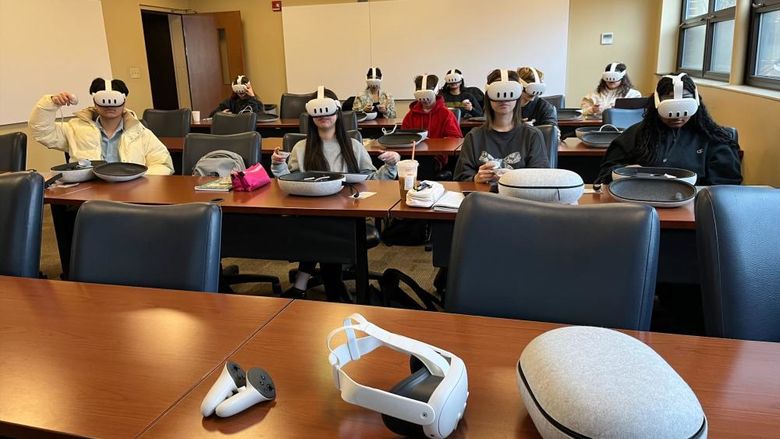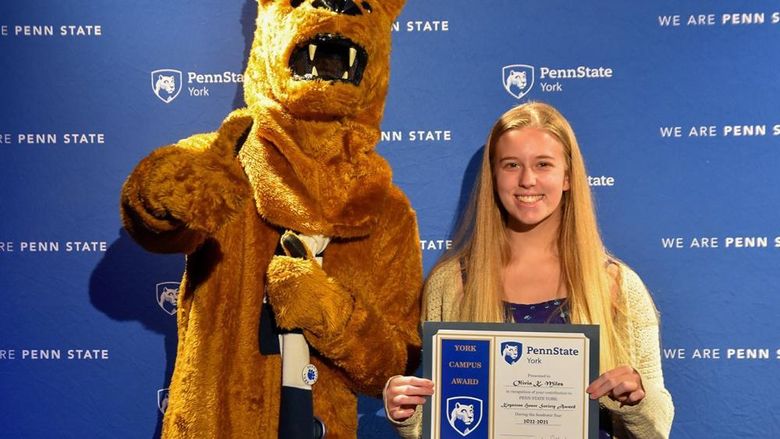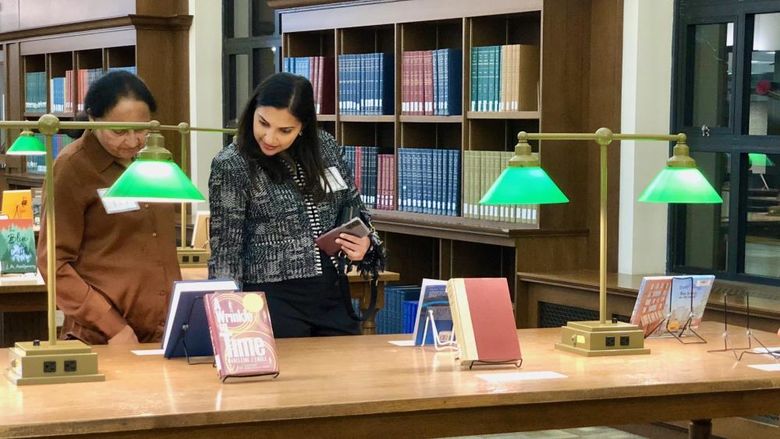UNIVERSITY PARK, Pa. — Deborah Eicher-Catt, professor in the communication arts and sciences at Penn State York; Shirley Moody-Turner, associate professor of English and African-American studies in the College of the Liberal Arts; and Craig R. Zabel, department head and associate professor of art history in College of Arts and Architecture; have received the Alumni/Student Award for Excellence in Teaching and have been named 2016 Penn State Teaching Fellows.
The Penn State Alumni Association, in conjunction with undergraduate and graduate governing bodies, established the award in 1985. It honors distinguished teaching and provides encouragement and incentive for excellence in teaching. Recipients are expected to share their talents and expertise with others throughout the University system during the year following the award presentation.
Deborah Eicher-Catt
Eicher-Catt knows education is a two-way street and she structures her classroom accordingly. She ascribes to the “flipping the classroom” teaching method, where students are the driving force in the learning process and are actively engaged in the course material.
“The content of a course delivered by means of information-sharing alone or ‘instruction’ never speaks for itself when it comes to learning,” said Eicher-Catt. “Approaching teaching as a one-way activity often fails to capture the complex nature of teaching and learning as a dynamic, two-way communicative phenomenon between teacher and students.” Instead, she prefers creating “dynamic communicative space in which the exploration of ideas becomes one of the key elements” of the classroom experience.
Eicher-Catt presses her students to communicate through an in-class assignment simply called “class dialogue.” The results, she says, are that students find deeper insight through shared understanding of the material because she teaches them “how to actively engage in the process” and be challenged with learning.
“I have found that no two classroom discussions on the same material are ever alike,” said Eicher-Catt. “And similar to the most genuine conversations we have with others — at least the most satisfying ones — it is the unpredictability of our encounters with others that continues to intrigue us, continues to entice us to enter into more dialogue, to learn more about self, others and the world around us.”
A colleague said Eicher-Catt’s teaching methods foster the development of these skills, adding that she goes beyond helping students learn the materials, teaching valuable tools that go beyond the classroom: active dialogue, respectful debates and critical thinking.
“She is a mentor to not only her students, but to her fellow faculty,” said the colleague.
A student from one of Eicher-Catt’s Women’s Studies classes said she “molded us into strong women who had a new view on how we viewed ourselves and told us we could do whatever we wanted with it,” adding “having a class with her is something I will always remember” and she’s forever grateful for “having her as my mentor, friend and teacher.”
Shirley Moody-Turner
Moody-Turner finds many of the most treasured concepts to be learned are often right in front of her students. That’s why, when she’s teaching topics such as folklore, race and oral history, she turns to real-life scenarios to guide her students.
In an Introduction to Folklore class, Moody-Turner urges her students to bring their own examples of folk songs, legends, myths and customs. After all, she says, folklore doesn’t belong to “other people.” It belongs to everyone.
In a course she co-designed specifically for student veterans, English 497: Oral History, Narrative and New Media Technologies, her students studied how Iraq War veterans were in the unique position to become the storytellers and historians of their generation. This class, which was team taught with WPSU, was awarded the Innovation Grant from the Corporation for Public Broadcasting. It also was instrumental in shaping future participant-led oral history projects.
The class speaks to one of her core teaching philosophies, where her students “learn to analyze and evaluate a diversity of ideas, information and situations” to become “persuasive writers and communicators who gain the confidence and experience to conceptualize articulate and share their ideas” with her, their classmates and the wider public.
A colleague praised Moody-Turner’s “innovative ways to spark discussions,” including the Iraq Veterans Project, an online course that she helped create, and “The Fire This Time: Understanding Ferguson,” where real-life events became real-time learning tools for understanding race in America.
The colleague praised her “exceptional ability to stimulate discussions, not just between the instructor and the students, but among the students themselves.”
“She is an exceptionally effective communicator of dialogue. She treats every student response as worthy of thought and consideration, creating a space where students feel comfortable speaking, and explicitly facilitates conversation to break down the student-instructor hierarchy,” added one of her students.
While Moody-Turner teaches a range of topic including folklore, cultural studies and literature, she says her philosophy remains the same: for her students to “develop the critical tools to become active and empowered global citizens, inspired to engage and shape the larger public discourse through a range of written, oral and digital media.”
Craig R. Zabel
Zabel said teaching architecture doesn’t have to be abstract and laden with technical jargon. After all, he says, the lessons are easy to grasp. They surround us.
“Architecture is one form of art that engages all of us every day: Where we live and where we work. What are the historical forces that have shaped the built environment of our own community, our nation, the world?” Zabels asks his students.
He asks his students to ponder why many structures at the University Park campus from the 1920s and 1930s reflect the distant principles of classicism initially developed for ancient Greek and Roman temples. Or why the water tower pays tribute to the famous dome of Florence Cathedral.
“Sometimes students during the semester will remark that even a walk across the Penn State campus was totally changed for them as they pick out motifs and architectural forms that were examined in class,” said Zabel.
Zabel, who has never let being a department head or interim dean keep him from the classroom in his more than 30 years of teaching, said his courses go well beyond the traditional considerations of study. He encourages his students to think of the religious, political, economic and social aspects of the art. Zabel said it’s important for him to teach to future professionals of architecture while keeping the material understandable and meaningful for someone without a strong arts background.
One of Zabel’s former students said his teaching is, without exaggeration, life changing. A class he took 25 years ago has had a lasting impact on him.
“From that day forward, I not only wanted to be an architectural historian, I wanted to be Dr. Zabel. I switched my major to art history, took four classes with Dr. Zabel, went on to earn a Ph.D., and, for the past 25 years, I have had the pleasure of being a professor of architectural history,” said the former student.




